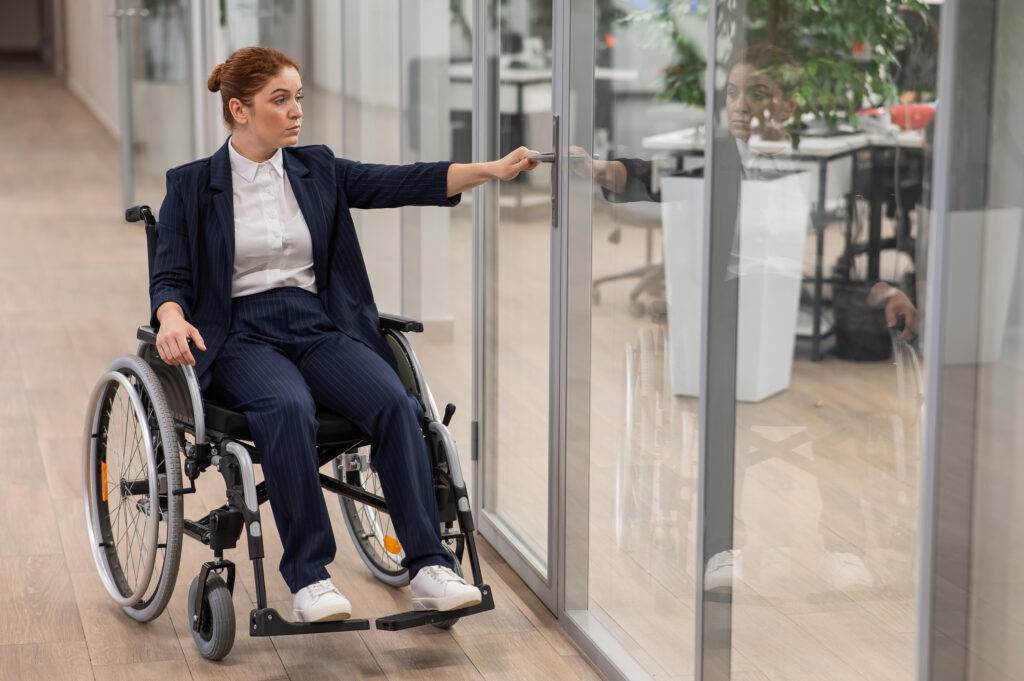Inclusivity is paramount in the modern workplace. At Streamline, we believe design is pivotal in creating an environment where everyone feels welcome and can operate at their best. Dive into our approach to building commercial workspaces with accessibility at the forefront.
The Importance of Accessibility in Workspace Design:
In an era emphasizing diversity and inclusion, workspace accessibility is not just about compliance but valuing every individual. An accessible workplace design caters to the varied needs of all team members, ensuring comfort, safety, and productivity.
Key Elements of Our Accessible Design Approach:
- Doorways & Hallways: High-traffic areas such as doorways and hallways need to be accessible to everyone. They must be wide enough for wheelchairs and have handles at reachable heights.
- Elevators & Ramps: For the workforce to easily access the whole office, elevators and ramps are necessary. They should be easily accessible and equipped with braille and auditory signals for visually impaired individuals.
- Restrooms: Everybody uses the bathroom. So it’s a no-brainer that they should be fitted with accessibility features. Think grab bars, lower sinks and easily reached flushes. The rooms should also be large enough for wheelchair accessibility.
- Open Floor Plans: Modern office interior designers have been gradually shifting towards open floor plans for several years. While this is a great design idea, it is also a must for accessibility. Open floor plans have reduced barriers like walls and cubicles, making free mobility and communication much more manageable.
- Desk and Workspace Adaptations: Height, size, and accessibility are the main things to consider regarding desk adaptations. Adjustable desks, plenty of under-desk clearance, and ergonomic accessories like footstools should be considered.

The Role of Color and Lighting:
Color contrasts help those with visual impairments navigate spaces. At Streamline, we select palettes that differentiate areas and paths. Proper lighting, free from glare, is equally crucial, reducing eye strain and enhancing visibility for all.
Benefits of an Accessible Workspace Design:
Beyond inclusivity, accessible designs can:
Enhance overall wellbeing:
For people with visible or invisible disabilities, the everyday strain of poor accessibility can quickly wear them down. However, having an inclusive and accessible workspace will reduce their mental and physical load.
Boost productivity and morale:
Productive teams are well-looked-after teams. A workplace that considers everyone’s needs equally and puts that into practice will help employees feel valued, which has been shown to improve productivity and morale.
Positive Brand Perception:
Creating an accessible workplace reflects positively on brand image. No matter the industry, prioritizing accessibility showcases a commitment to diversity and inclusion.
At Streamline, we know commercial design and build. Building accessible workspaces isn’t just good practice; it’s our responsibility to craft environments where every individual thrives. Let’s reshape the future of workspaces together.
Ready to make your workplace a beacon of inclusivity? Reach out today for a workspace consultation.
